In 2025, companies aren’t looking to build massive server rooms anymore. They’re not interested in buying racks, stacking hardware, or managing air-conditioned cages with blinking lights. What they want is stability, speed, and someone else to take care of the mess.
That’s why cloud managed data center services are having a moment. Businesses—from small SaaS firms to mid-sized logistics providers—are outsourcing infrastructure management. Not just to save money, but to get time, control, and reliability.
What Are Cloud Managed Data Center Services?
A cloud managed data center service means you’re not running your own servers. A third party handles the setup, monitoring, maintenance, patching, backups, and scalability for you. Your team focuses on product, not power supply. It’s everything a traditional data center does—except someone else handles it all remotely, often with guaranteed SLAs.
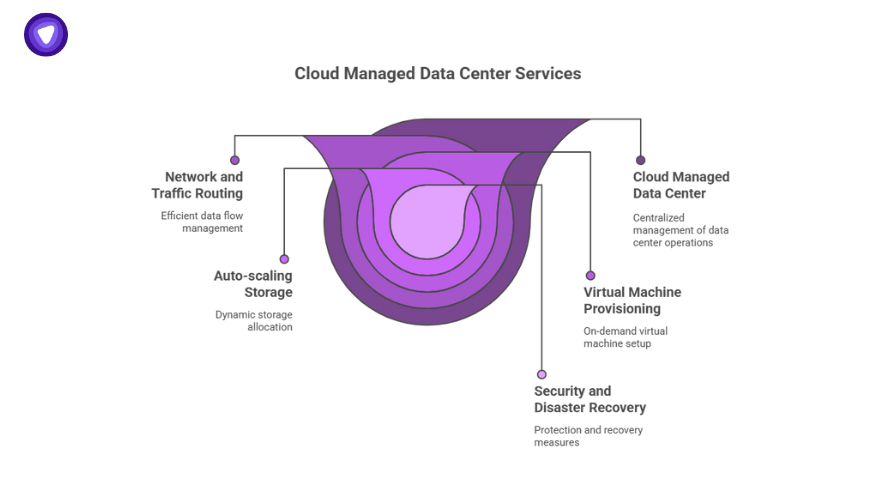
And it’s not just about servers. These services include:
- Network and traffic routing
- Virtual machine provisioning
- Auto-scaling storage
- Security and firewalls
- Uptime monitoring
- Disaster recovery
Let’s be clear: cloud managed data center services don’t just reduce operational headache—they give companies the agility to move fast without building everything in-house.
Common Use Cases (With Examples)
Here are some common cloud managed data center services examples in real-world B2B setups:
| Use Case | Industry | Example Tool or Service |
| CI/CD with auto-scaling | SaaS / DevOps | AWS CodePipeline + EC2 |
| Secure backups & DR | Healthcare | Veeam with Azure Integration |
| Global content delivery | Media/Publishing | Akamai / Cloudflare Network |
| E-commerce burst traffic | Retail | Google Cloud + Kubernetes |
| Internal virtual machines | Consulting | VMware Cloud Foundation |
Whether it’s a startup launching APIs or a law firm needing secure file sync, the services scale up or down based on demand.
Why It’s Catching Fire in 2025?
The landscape has changed. Remote work is the default. SaaS is how businesses operate. Cybersecurity risks are higher than ever. And most companies realize that managing hardware isn’t where their core value lies.
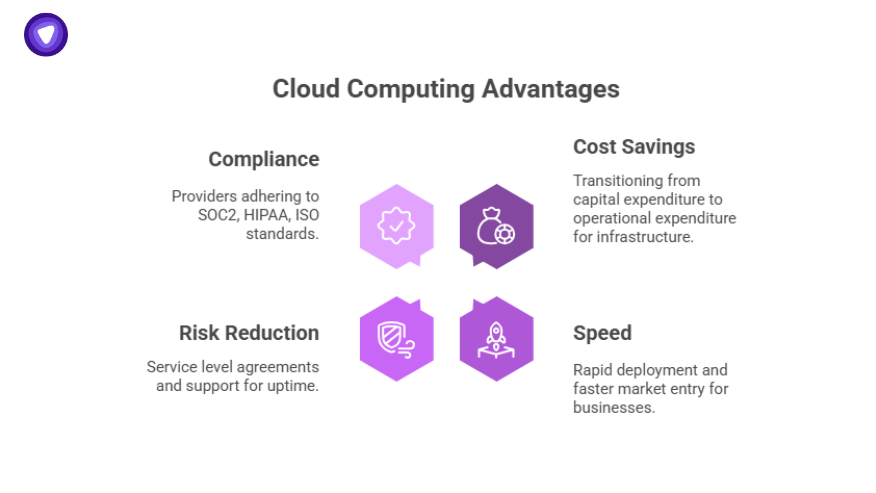
Here’s what’s pushing the demand:
- No CapEx, only OpEx: You don’t buy servers—you rent scalable infrastructure.
- Faster Time to Market: No need to set up racks. You go live in hours.
- Reduced Risk: SLAs and support teams keep uptime high.
- Built-in Compliance: Many providers are already SOC2, HIPAA, or ISO 27001 compliant.
If you’re comparing hosting a data center in-house versus outsourcing, the cost and efficiency gap has become impossible to ignore.
What Is a Data Center in Cloud Computing?
It’s important to clarify this:
A data center in cloud computing is a physical or virtual facility where computing resources, like servers, storage, and network infrastructure, are hosted and made accessible via the internet.
Think of it as your infrastructure backbone, managed remotely but ready to run your business-critical apps.
Types of Data Centers
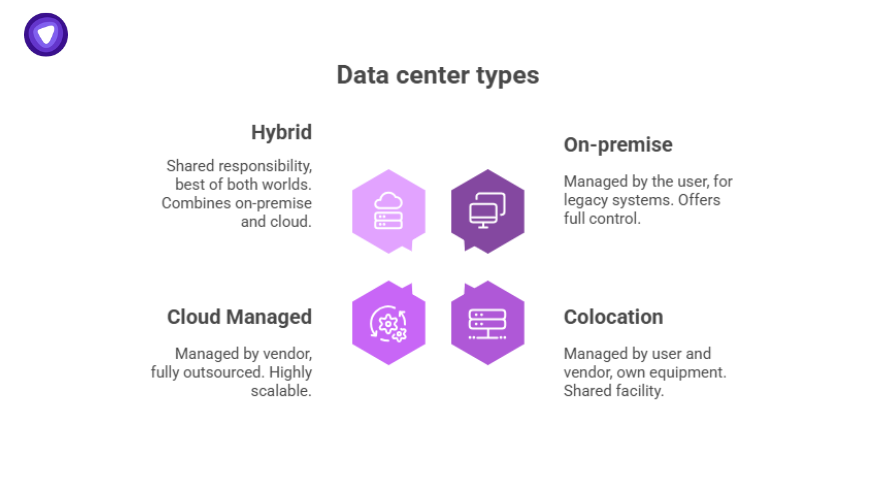
There are four key types of data centers, and it’s helpful to see how they compare:
| Type | Who Manages It | Use Case |
| On-premise | You | Legacy systems, full control |
| Colocation | You + Vendor | Own equipment, shared facility |
| Cloud Managed | Vendor | Fully outsourced, scalable |
| Hybrid | Shared Responsibility | Best of both—on-prem + cloud |
If you’re weighing options, colocation data center setups still appeal to enterprises with regulatory or latency constraints. But for most businesses, managed cloud services strike a better balance.
Managed Data Center vs Colocation: Key Differences
| Feature | Managed Data Center | Colocation |
| Hardware Ownership | Vendor | You |
| Maintenance Responsibility | Vendor | You |
| Support & Monitoring | 24/7 by vendor | Often requires in-house effort |
| Flexibility / Scaling | High | Limited |
| Ideal for | SaaS, startups, SMBs | Enterprises with legacy systems |
That’s why “managed data center vs colocation” is no longer just a cost debate. It’s about how much control you need versus how much hassle you want.
What’s Inside a Cloud Managed Data Center?
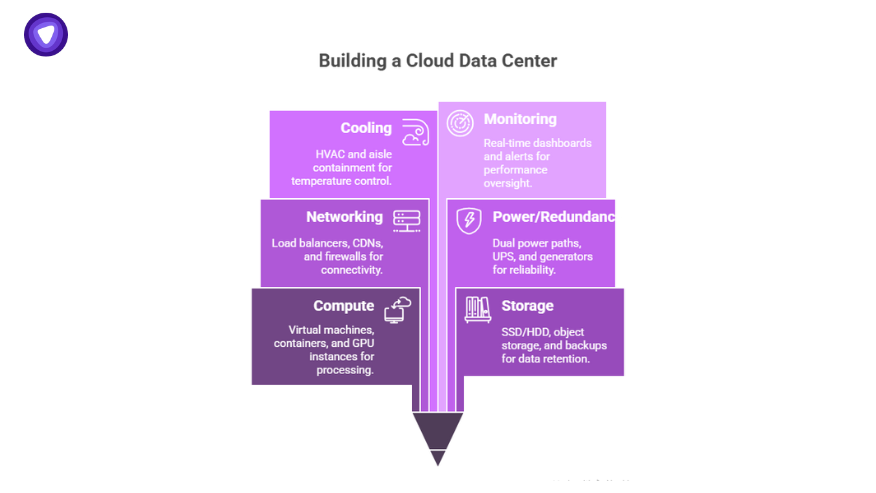
Let’s break down what is data center infrastructure typically included in cloud-managed models:
- Compute – virtual machines, containers, GPU instances
- Storage – SSD/HDD, object storage, backups
- Networking – load balancers, CDNs, firewalls
- Power/Redundancy – dual power paths, UPS, diesel generators
- Cooling – HVAC, aisle containment
- Monitoring – real-time dashboards, alerts
- Security – biometric access, CCTV, intrusion detection
The complexity is hidden from you. You just get a control panel and an SLA.
Curious what real sysadmins and engineers think about outsourcing to managed data centers? Check out our Reddit, where professionals share raw, unfiltered opinions about vendors, performance issues, and what to avoid.
How Businesses Are Thinking Smarter About Infrastructure?
Some of the best cloud managed data center services now offer:
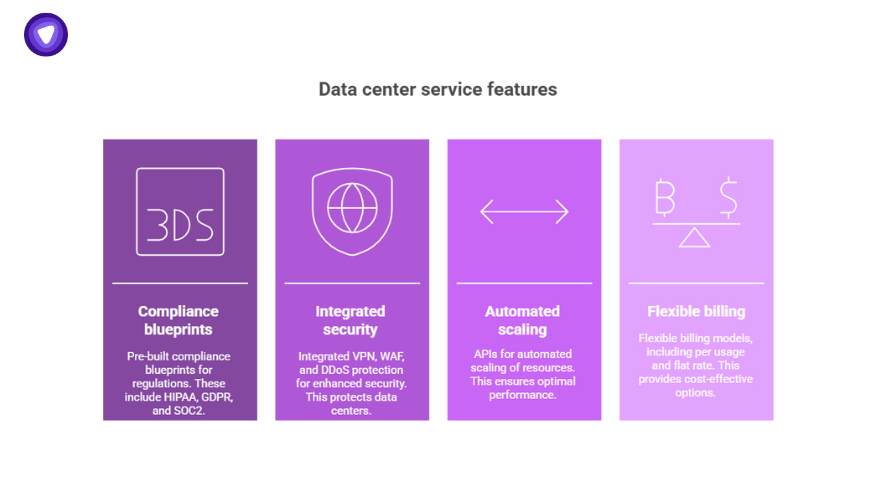
- Pre-built compliance blueprints (HIPAA, GDPR, SOC2)
- Integrated VPN, WAF, DDoS protection
- APIs for automated scaling
- Flexible billing models (per usage, flat rate)
That’s why businesses—especially those with lean teams—are turning to providers who can plug right into their stack without adding overhead.
Want to see how other CTOs, DevOps leads, and infrastructure managers are handling cloud migration in 2025? Join us on Linkedin and learn how teams are rethinking cost, scalability, and uptime with cloud managed data center services.
How PureVPN Fits Into This Picture?
While cloud-managed services give you infrastructure agility, they often fall short when it comes to user privacy and secure connectivity at the edge. That’s where PureVPN comes in.
If you’re building a secure product suite or a B2B solution for regulated industries, adding your own white-label VPN offering through PureVPN lets you offer:
- Encrypted tunnels for remote staff
- Geo-restricted access control
- Zero-logging guarantee under your brand
- Fully managed VPN apps with API access
You don’t just outsource infrastructure. You take back control of privacy—without managing the stack.
Final Thoughts
Companies are no longer asking if they should outsource. They’re asking what to outsource next. First it was payroll. Then customer service. Now, it’s infrastructure.
Cloud managed data center services aren’t just an option—they’re the backbone of modern operations.
If you’re a business preparing for scale, don’t just chase uptime. Own your flexibility, own your privacy, and make infrastructure someone else’s job.
PureVPN is ready to help you do that—securely, and under your own brand.


